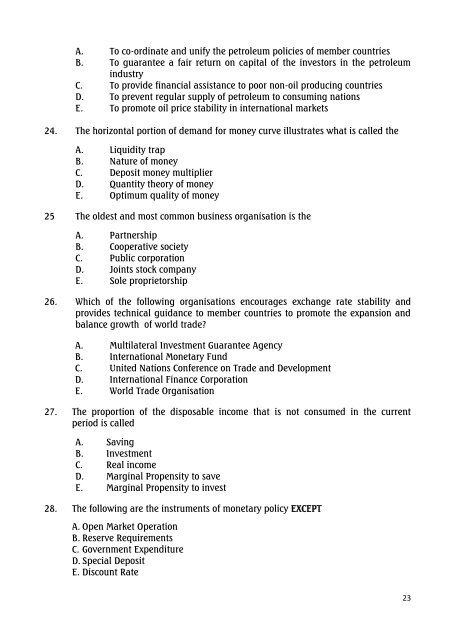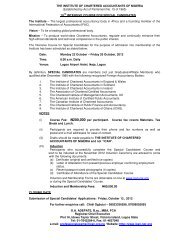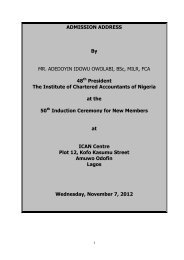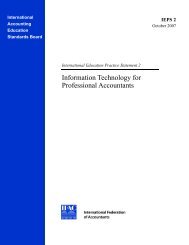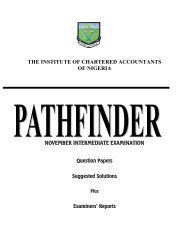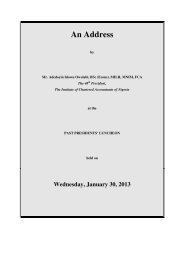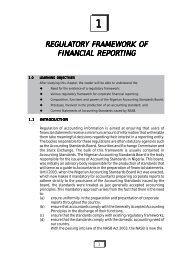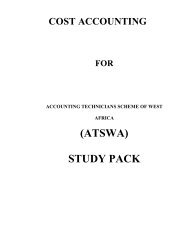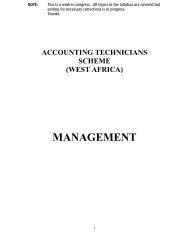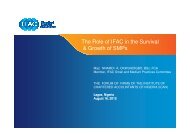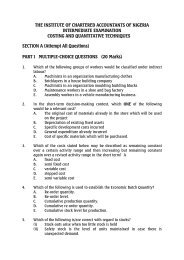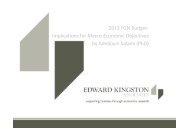atswa pilot questions answers part i - The Institute of Chartered ...
atswa pilot questions answers part i - The Institute of Chartered ...
atswa pilot questions answers part i - The Institute of Chartered ...
You also want an ePaper? Increase the reach of your titles
YUMPU automatically turns print PDFs into web optimized ePapers that Google loves.
A. To co-ordinate and unify the petroleum policies <strong>of</strong> member countries<br />
B. To guarantee a fair return on capital <strong>of</strong> the investors in the petroleum<br />
industry<br />
C. To provide financial assistance to poor non-oil producing countries<br />
D. To prevent regular supply <strong>of</strong> petroleum to consuming nations<br />
E. To promote oil price stability in international markets<br />
24. <strong>The</strong> horizontal portion <strong>of</strong> demand for money curve illustrates what is called the<br />
A. Liquidity trap<br />
B. Nature <strong>of</strong> money<br />
C. Deposit money multiplier<br />
D. Quantity theory <strong>of</strong> money<br />
E. Optimum quality <strong>of</strong> money<br />
25 <strong>The</strong> oldest and most common business organisation is the<br />
A. Partnership<br />
B. Cooperative society<br />
C. Public corporation<br />
D. Joints stock company<br />
E. Sole proprietorship<br />
26. Which <strong>of</strong> the following organisations encourages exchange rate stability and<br />
provides technical guidance to member countries to promote the expansion and<br />
balance growth <strong>of</strong> world trade?<br />
A. Multilateral Investment Guarantee Agency<br />
B. International Monetary Fund<br />
C. United Nations Conference on Trade and Development<br />
D. International Finance Corporation<br />
E. World Trade Organisation<br />
27. <strong>The</strong> proportion <strong>of</strong> the disposable income that is not consumed in the current<br />
period is called<br />
A. Saving<br />
B. Investment<br />
C. Real income<br />
D. Marginal Propensity to save<br />
E. Marginal Propensity to invest<br />
28. <strong>The</strong> following are the instruments <strong>of</strong> monetary policy EXCEPT<br />
A. Open Market Operation<br />
B. Reserve Requirements<br />
C. Government Expenditure<br />
D. Special Deposit<br />
E. Discount Rate<br />
23


